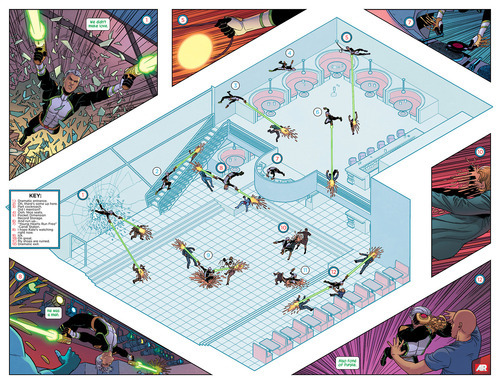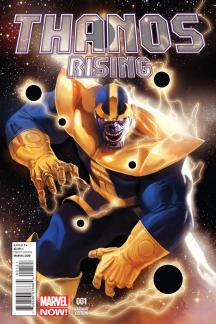Monday, 25 November 2013
Why comics are more than just pictures and words
Posted by
Scott Malthouse
This weekend I attended Thought Bubble Comic Con, an event that is often referred to as the best comic book convention in the UK, and for good reason. While like likes of San Diego and New York boast A-list movie star guests and first glimpses of new films and shows, Thought Bubble is very much about the comics. Because of this, panels at Thought Bubble are some of the best fodder for anyone who wants to hear their favourite comic creators get philosophical about the medium (as well as just plain gushing). There's a reason why they are so in love with comics - it's probably the most versatile form of media that exists. It's easy for the uninitiated to think that comics are just words and pictures. At their most basic this is true, but to create a truly good story a comic must be much more than this.
Trust in the reader
In one panel I attended, Marvel scribe Kieron Gillen explained why creators forge an inherent trust in the reader when they make comics. This mostly comes down to how people physically read comics. In a novel reading speed is fairly consistent all the way through. You may stop to look up an unfamiliar word, but ultimately you're reading at the same speed. In comics this isn't the case. As well as being written, comics are also essentially 'built'. Creators need to think about image and text placement and what is happening holistically on the entire page. People don't read from left to right - their eyes are drawn to particular images or fonts, so a whole page is as important as a single cell. Creators have a trust that the reader is going to go about the comic as they intended. They can guide them as much as possible, but that can only go so far. Gillen described it as being both a creator and an audience at the same time. At one time you have to let go of your work and trust that the reader is going to move through the page as you intended. Look at the spread below. There are many ways you can read it - it doesn't have to be from left to right.
Furthermore, one person may spend one minute on a page while another might spend 10 - it all depends on what they look for in comics. The reader is much more in control of the pacing of the book, which can change the feel of the story in some instances.
Storytelling with art
Clearly art is a massive part of comic books and it's one of the more overlooked parts of storytelling. Artists have to create a story with their images just as much as writers do with their words. Some comics are poor because the imagery doesn't compliment the words. You could have the best writer in the world on a comic, but if the artist is unable to tell the story with art then it's going to be a poor comic. The entire feel of the comic can also change depending on the art style. Imagine a story about a war. If this were illustrated with the lush but often bleak brushstrokes of J.H. Williams III then that would set a serious and sombre tone. However, if you used the same script but had the cartoon wackiness of Skottie Young, then your tone would change entirely. In one panel at Thought Bubble Kelly Sue DeConnick explained how important it was that the writer knew who the artists was so that they could write with their style in mind.
Breaking bounderies
Comics can do things that no other entertainment medium is able to pull off. Comics have multiple elements that can be manipulated in order to add an extra dimension to the story. Comics can twist expectations by using the medium to its full potential. Just look at the page from Young Avengers below.
Here artist Jamie McKelvie plays with the comic book medium by introducing a meta element to the page. Characters are being broken out of their panels and existing is the spaces between panels. This kind of tinkering is something that's difficult for any other medium to do. Similarly, check out this Batwoman spread.
That entire spread is a fight scene - one that could never exist outside of the medium. In that single image there is so much going on both inside and out of panels that at first it's quite difficult to get your head around, but there's no doubt how beautiful it is.
Comics are much more sophisticated than they're often given credit for and there's many more reasons than those I've listed here. If you're not into comics then I hope you've at least been convinced that they're not just pictures on a page with some word balloons dotted around.
Subscribe to:
Post Comments (Atom)






No comments:
Post a Comment